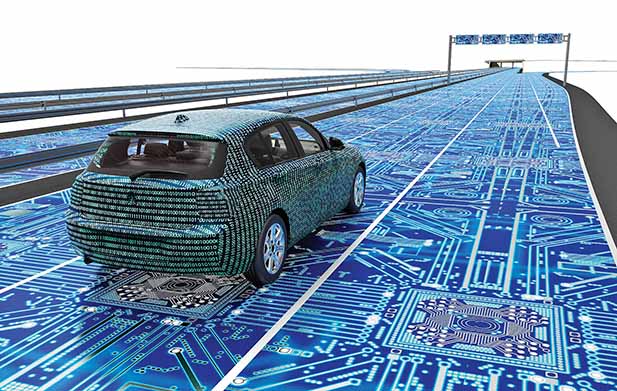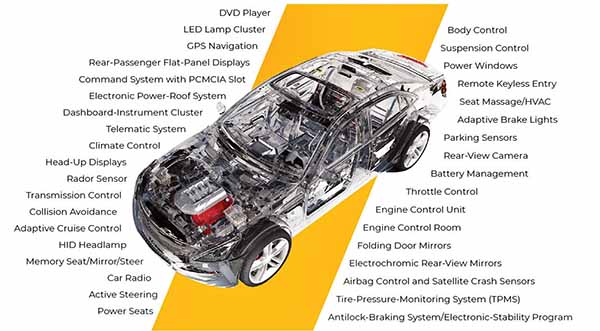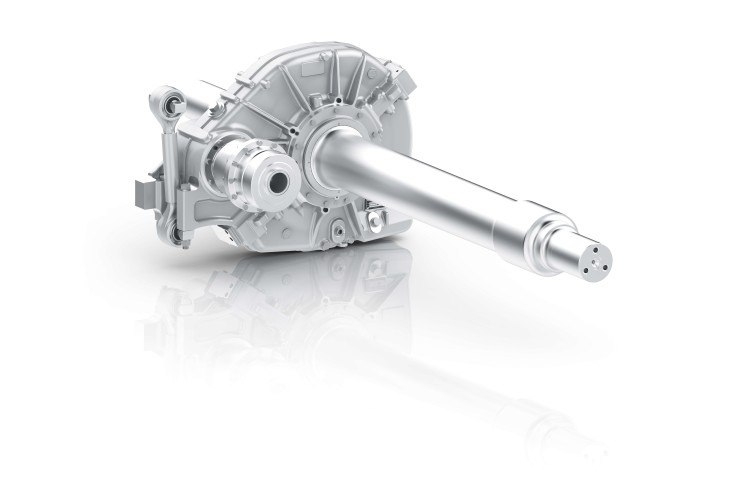Automotive electronics, critical to modern vehicle success, face challenges that require innovative solutions like simulation to ensure reliability, safety, and compliance, writes Sudheer Reddy, Sales Director, Ansys Software Pvt. Ltd.
The automotive industry is in the middle of a technological revolution driven by quick technological advancements, evolving regulatory requirements, and changing consumer demands. With the growth of Electric Vehicles (EV), autonomous driving, Advanced Driver Assistance Systems (ADAS), and connected technologies, the traditional boundaries of the automobile as we knew it are being redefined. Today, there is a growing dependency on automotive electronics. Automotive electronics includes all electronic systems in vehicles, including chips or semiconductors, engine management, sensors, computers, ignition, and infotainment systems. From advanced safety systems and multifaceted infotainment to autonomous driving technologies, automotive electronics are crucial to the success of modern vehicles. Rest assured, the industry adapts swiftly to these changes, ensuring a promising future for automotive electronics.
- The growing importance of automotive electronics
In the past few decades, with the shift from mechanical to electronic systems, the role of electronics in vehicles has considerably increased. In 1980, electronics made up only about 10 per cent of the total car cost; in 2010, this share became 35 per cent (Statista). By 2030, electronics are projected to make up around 50 per cent of the cost of a car. However, with the progression in automotive electronics, some challenges have emerged, especially in reliability and safety. Acknowledging that outdated testing and design tactics are insufficient to guarantee reliable and safe automotive electronics is crucial. This is where the role of automotive engineers becomes even more significant.
Ø Business imperatives for automotive electronics
Automotive electronics let auto makers differentiate their products through exclusive features and advanced technology. Cutting-edge electronics allow manufacturers to attract customers looking for the latest innovations. Regulations such as ISO 26262 also mandate rigorous safety standards for electronic systems, and automotive electronics play a crucial role in meeting requirements and warranting vehicle safety.
Today, consumers seek a smooth and connected experience. Electronics power infotainment systems, connectivity features, and advanced user interfaces enhance the driving experience. They also contribute to reducing warranty costs and ensuring customer satisfaction. Electrification is primarily driven by sustainability and environmental goals, and automotive electronics enable energy-efficient systems and help reduce emissions. With the increase in growth in the automotive sector, the importance of automotive electronics will also surge. This necessitates newer approaches to design, testing, and validation.
- Role of simulation in addressing challenges
Simulation has a vital role to play in addressing the complex challenges that come with automotive electronics. In the case of testing in harsh environments, simulation can virtually recreate harsh operating conditions, including temperature extremes, vibration, shock, and moisture. This allows in-depth testing of electronic components and systems, and there is no need for physical prototypes. Engineers can also categorise possible failure points by simulating the stressors. On the reliability and durability front, simulation tools facilitate the conduction of Design for Reliability (DfR) analysis where the entire life cycle of electronic components is simulated to forecast failure mechanisms and stress factors. Simulation tools can model thermal, shock, and vibration stress, allowing engineers to validate reliability early in the design process and reducing costly rework and recalls. By leveraging the Field meta-Model of Optimal Prognosis (F-MOP) technology, complex
multi-physics simulations can be distilled into physics-based insights, allowing even non-simulation experts, such as board designers and product managers, to gain valuable knowledge early in the design process. This democratisation of simulation insights, coupled with web-based accessibility for non-CAE experts, accelerates the life prediction of electric boards—over 500 times faster—while ensuring 100 per cent reuse of multi-physics data.
Regulatory Requirements require simulation to reduce the the manual effort involved in meeting regulatory requirements, streamline the process, and reduce the risk of errors. Simulation tools can automate functional safety analysis and generate the required documentation to demonstrate compliance. The miniaturisation and high-density electronics have led to engineers analysing thermal performance, predict hot spots, and ensure proper cooling in densely packed electronic systems. This helps prevent thermal-related failures and improves the reliability of high-density components.
Managing the complex powertrain systems of EVs – High-fidelity 2D/3D component and 3D vehicle electromagnetic simulation can manage the complex powertrain of EVs. The approach is industry-leading in terms of extracting parasitic elements from electronic components—such as control/power PCBs, power modules, busbars, common mode chokes, and eMotors—and integrating them into a complete EV system for comprehensive radiated emission testing. With ‘Ansys Electromagnetics Solvers’ engineers can simulate a variety of power electronics components like inverters, battery chargers, and DC-DC converters accurately, thereby enabling a flexible and robust analysis workflow. This reduces the prototyping costs and the risk of project delays due to compliance issues by 30 per cent and 20 per cent, respectively. It significantly advances the pace at which automotive companies can bring compliant, innovative, and reliable electric vehicles to the market.
To facilitate the management of integration complexity – today’s vehicles are more interconnected, and integrating numerous electronic systems is challenging. Simulation can model complex systems and evaluate their interactions to ensure compatibility and proper communication. This helps prevent integration issues and allows the identification of potential software bugs/hardware conflicts early in the design process. On the security front, engineers can identify vulnerabilities and strengthen security measures by simulating potential attack vectors and testing the resilience of electronic systems against cyber threats. This reduces the risk of unauthorised access and ensures the safety and privacy of vehicle systems. Cost and time reduction is possible as simulation can reduce development costs and accelerate the time-to-market. Engineers can escape costly alterations and cut the need for extensive physical testing by detecting issues early in the design process. It permits parallel testing and faster design iterations. Aiding improved design validation/testability – Identifying failure modes through old-fashioned testing methods is difficult. However, simulation allows engineers to create virtual prototypes. This further allows them to run various test scenarios to validate the performance and reliability of electronic systems.
Today, automotive electronics still heavily relies on physical processes and expertise. Simulation tools can reduce this and help bridge the talent shortage, as design teams can now leverage automation. A design engineer can now leverage an automated simulation workflow, which makes the process less prone to human error.
The simulation addresses the challenges of automotive electronics and enables engineers to test and validate electronic systems in a virtual environment. This guarantees reliability, compliance, and security while reducing costs and fast-tracking the time-to-market. As the automotive industry continues to evolve, simulation will play an increasingly critical role in shaping the future of automotive electronics. ACI
Technology Trends Shaping Automotive Electronics
With the revolution in the automotive industry, a few technology trends are restructuring how vehicles are being designed, manufactured, and used by consumers today.
Electrification: There is a marked shift toward EVs today due to rising environmental concerns, regulatory requirements, and customer demand. This calls for a new level of electronic sophistication to manage electric drivetrains, battery systems, and energy efficiency.
Connected: Integrating with smart phones, other smart home devices, and cloud-based services, today’s vehicles are becoming more connected. However, it depends on robust electronic systems that enable seamless communication, navigation, and entertainment.
ADAS and Autonomous Driving: Vehicle safety and accessibility are being redefined by ADAS and Autonomous driving technology. They rely on sensors, radar, cameras, and artificial intelligence –all these are powered by automotive electronics.
Software-Defined Vehicles: With Over-The-Air (OTA) updates and post-purchase features, modern vehicles are progressively driven by software. This trend highlights the need for reliable automotive electronics to sustain this functionality.
Challenges And Limitations In Automotive Electronics
Automotive electronics also brings several challenges and limitations.
Harsh Environments – Automotive electronics have to endure all operating conditions. This could include temperature fluctuations, moisture, dust, vibration, and even mechanical shocks from accidents. These conditions can lead to degradation of electronic components and increase the risk of failure.
Reliability and Durability – In automotive electronics, failures can lead to significant safety threats, and physical prototyping and testing are both time-consuming and unable to capture all possible failure modes. There are also challenges in assessing and enhancing the reliability of Printed Circuit Boards (PCBs) and bonded connections. Ensuring long-term reliability is critical in a space where electronic components undergo rigorous drive cycles and severe environmental conditions.
Regulatory Requirements – Regulatory standards for functional safety are becoming stricter, requiring detailed analysis and verification of safety at the component level, including semiconductors. This adds more difficulty and additional development costs.
Miniaturisation and High-Density Electronics – Miniaturisation in semiconductors and high-density electronic systems presents new risks. Smaller feature sizes (4nm) surge the probability of failure due to bias temperature instability, dielectric breakdown, and hot carrier effects. High-density designs also muddle thermal management.
Complex powertrain systems – A key engineering goal for electric vehicles is to virtually prototype the Electromagnetic Compatibility (EMC) impact of the e-Powertrain on the entire EV. The aim is to expedite go-to-market timelines for Conducted and Radiated Emissions compliance while concurrently decreasing physical prototyping costs. This is a difficult ask.
Complexity in Integration – With vehicles becoming more connected with sensors, cameras, radar, and infotainment systems, the intricacy of integrating these systems increases. This can lead to compatibility concerns, communication inaccuracies, and increased threat of software bugs.
Security Issues – With the rising connectivity in modern vehicles, security has become a significant concern. Automotive electronics are vulnerable to hacking and unlawful access and pose safety and privacy risks.
Cost and Time – Automotive companies are under tremendous pressure today to cut costs and increase time to market, but the complexity of automotive electronics makes this problematic.
Design Validation/Testability – Old-style design validation methods are not enough for modern electronics as they need new approaches for testability.
Talent Deficit – Automotive electronics requires a highly skilled workforce that can understand complex electronic systems and utilise advanced simulation tools. There is a shortage of this.
These challenges highlight the need for advanced approaches to designing, testing, and validating automotive electronics, and simulation is the answer. Simulation allows engineers to test and validate electronic systems in virtual environments, reduce the risk of failure, and ensure regulatory compliance.
End















Leave a Reply